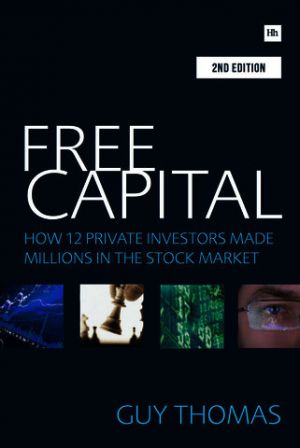
Small caps! It's a privilege to write this page for you every week, but close on its heels in terms of stimulation was the job I had for five years writing a newsletter on small companies, including the pressing responsibility of setting out three new recommendations every month.
The job of rifling through the 2,000 or so companies that make up the back end of the stock market and attempting to identify the pearls amongst the swine is for many investors a source of fascination quite on the same plane as fiction, music and sport. As an Investors Chronicle reader, you surely know this well.
And you might agree that it's a good job the process itself is gripping, because the outcome often isn't. I believe my recommendations acquitted themselves, but I doubt whether they made anybody seriously rich. I therefore found a new book, Free Capital by Guy Thomas a compelling read. The book describes how 12 private investors have made themselves meaningfully wealthy from modest beginnings. All 12 have accumulated sufficient "free capital" - and such confidence in their ability to continue doing so - that they have given up their jobs to dedicate themselves to their portfolios. You could learn a lot from this dazzling dozen and Guy Thomas (himself a private investor on a par with his subjects) sets out the lessons very clearly. And lesson number one is small caps.
All but one of the dazzling dozen focus wholly or significantly on small caps (the twelfth is a day-trader of the FTSE350). You should not need to read this book to learn what smallcaps have to offer, starting out with the fact that they are overlooked by institutions. Nevertheless, you will find the comprehensive reprise of their investment virtues spread through this book a valuable master class.
Lesson number two is hard work and professionalism. These people all take their investments very, very seriously. Most of them get up early to read the market news, then spend up to 14 hours studying their existing investments and looking for potential new ones. And most of them do not need to do this. They do it because they enjoy it, revelling not in their wealth (many live modestly ? another vital contributor to "free capital", although one runs a 70 foot yacht), but in their ability to generate wealth.
They do this in very different ways. Two have each made over 30,000 bulletin board posts (often a means of gaining knowledge as well as displaying it). A couple keenly attend company meetings, call directors on the phone (we are in the realm of investors who routinely own several per cent of the - small - companies in which they invest) and go to great lengths to obtain quality scuttlebutt. Most read annual reports very carefully but some only casually. Eight of the 12 are what Guy Thomas calls "surveyors" - that is, their starting point is the company, its balance sheet and its prospects, but two are "geographers" who identify attractive secular trends before they look for the shares most likely to be swept forward by these trends. Half have very focused portfolios with fewer than ten main holdings. Only two have over 50 holdings. Guy Thomas has interesting views about how many shares you should hold - see his "gems vs flower bulbs" posting at guythomas.org.uk/blog.
Six have a typical holding period which runs to years. Two often hold shares for only a few weeks. However on one key aspect of investing they are all in agreement: they barely use leverage.
Although ten of the 12 investors are not identified (the other two are well known), a central virtue of the book is that it sketches in the career and personal character of each subject. This helps the reader understand the diverse investing styles and encouragingly illustrates how the investors progressed from journeymen to virtuosos. Some had the luxury of doing this in the City. Seven have serious degrees or professional qualifications but three had no further education after school. Ten discovered equity investment for themselves. And one aspect of these journeys is very common: they all spent a long time learning their craft and experienced reverses - sometimes pretty silly ones - in the process. From these accounts, you could almost convince yourself that you too could experience this kind of success.
This is definitely the best investment book that has crossed my desk for some time. Now, I'm off to read it again. You should too.